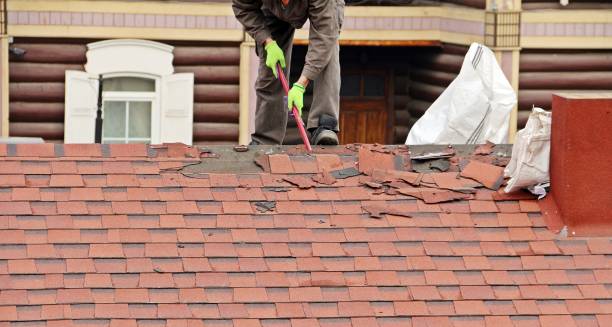Forensic Roof Inspections: Unveiling Hidden Roof Issues for Safety and Longevity
A roof serves as the first line of defense against the elements, safeguarding your home or building from rain, snow, wind, and sun. Over time, however, even the most carefully constructed roofs can experience wear and tear, which may not always be immediately visible. If these issues go unnoticed, they can lead to significant structural damage, financial loss, and safety risks. In cases where roof damage is suspected, forensic roof inspections play a critical role. These specialized inspections are designed to identify hidden problems, determine the root cause of issues, and provide valuable insights for homeowners, contractors, and insurance companies.
In this article, we will explore the significance of forensic roof inspections, when they are necessary, and how they can help maintain the safety and longevity of your property.
What is a Forensic Roof Inspection?
A forensic roof inspection is a detailed investigation of a roof to determine the cause of damage, deterioration, or failure. Unlike routine roof inspections that simply assess the current condition of the roof, forensic roof inspections are conducted to investigate specific issues, such as persistent leaks, storm damage, or structural concerns. These inspections typically involve a thorough examination of the roofing materials, underlying structure, and environmental factors that may have contributed to the problem.
Forensic roof inspectors use advanced techniques, such as moisture detection tools, infrared cameras, and drone inspections, to detect issues that might not be visible to the naked eye. Their goal is to uncover the root cause of the damage and provide a detailed report that helps determine whether the issue is related to poor construction, design flaws, improper maintenance, or environmental factors like severe weather.
Why Are Forensic Roof Inspections Important?
Forensic roof inspections are crucial for several reasons, especially when it comes to identifying problems that may not be immediately obvious. Here are the key benefits and importance of forensic roof inspections:
1. Detecting Hidden Damage
Roof damage often isn’t visible from the ground or even from a standard roof inspection. A small leak, for instance, might not leave visible signs until it’s caused significant water damage to the interior of a building. Forensic roof inspections are designed to uncover hidden issues such as trapped moisture, structural weaknesses, and underlying causes of leaks that are not immediately noticeable. By identifying these issues early, forensic inspections can prevent further damage and ensure the safety of the property.
2. Identifying the Root Cause of Roof Problems
Roof problems can arise from various sources, and pinpointing the exact cause is crucial in determining the best solution. Forensic roof inspections go beyond identifying surface-level damage; they aim to investigate the root cause of the problem. Whether the issue is related to poor installation, subpar materials, inadequate maintenance, or external factors like extreme weather conditions, forensic inspections provide a detailed analysis of the problem’s origin. This helps homeowners and contractors make informed decisions about repairs, replacements, or adjustments to prevent future damage.
3. Supporting Insurance Claims
When a roof is damaged due to storms, fire, or other external events, homeowners often need to file an insurance claim. In these cases, forensic roof inspections can be critical in determining the extent of the damage and whether it falls under the coverage of the insurance policy. The inspection report provides insurers with valuable information about the cause of the damage and whether it was due to an event covered by the policy.
A forensic roof inspection can also be helpful when there is a dispute over the cause of damage. If the roof was damaged due to faulty construction or installation, a forensic inspection can provide the evidence needed to support a legal claim or warranty enforcement. Without a professional, detailed report, it may be difficult to prove that the damage was caused by external forces, rather than poor workmanship or materials.
4. Preventing Long-Term Structural Damage
Many roof problems, such as leaks or small cracks, might appear harmless at first. However, if left untreated, these issues can lead to significant structural damage over time. For example, a minor leak can lead to mold growth, rotting wood, and weakening of the roof’s structural components. A forensic roof inspection helps to detect these early signs of damage before they become major problems that require expensive repairs or replacements. By identifying these issues early, property owners can address them promptly, preventing long-term damage and preserving the integrity of the building.
5. Improving Roof Performance and Longevity
Forensic roof inspections not only help to uncover hidden problems but also allow property owners to assess the overall performance and durability of their roof. Through these inspections, roofers can determine whether the roof is functioning as intended or if improvements are necessary. In some cases, small changes or repairs can improve the roof’s performance and extend its lifespan. Regular forensic inspections can also help to identify areas that need maintenance, ensuring that the roof continues to perform at its best over the long term.
The Forensic Roof Inspection Process
The process of a forensic roof inspection typically involves several steps to ensure a thorough evaluation of the roof's condition. Here’s an overview of what a forensic roof inspection entails:
1. Initial Assessment and Documentation Review
Before conducting the inspection, the forensic roof inspector will gather relevant information, such as building plans, previous inspection reports, maintenance records, and any reports of damage. Understanding the building’s history and any previous issues with the roof helps the inspector plan the inspection and look for potential recurring issues.
2. Visual and Physical Inspection
The inspector will conduct a visual inspection of the roof, looking for signs of wear, damage, or defects. This inspection includes examining the roofing materials, such as shingles, tiles, and flashing, to look for cracks, missing pieces, or other visible issues. The inspector will also check the roof structure, including beams, trusses, and supports, to ensure there are no signs of sagging or structural instability.
During this phase, the inspector may use specialized tools, such as moisture meters, to assess the level of trapped moisture or water damage. They may also use infrared cameras to detect hidden leaks or areas of the roof that are not visible to the naked eye.
3. Investigation of the Cause
One of the main goals of a forensic roof inspection is to determine the underlying cause of the roof problem. The inspector will carefully examine factors such as the quality of the materials, construction techniques, and the roofing system's design. In some cases, the inspector may need to gather additional information, such as weather patterns or reports of storm activity, to assess whether environmental factors contributed to the damage.
4. Reporting and Recommendations
After completing the inspection, the forensic roof inspector will prepare a detailed report that includes the findings of the inspection, the suspected cause of the damage, and any supporting evidence, such as photographs or diagrams. The report will also include recommendations for repairs or further investigations if necessary. In some cases, the inspector may suggest measures to prevent future damage or extend the life of the roof.
Benefits of Forensic Roof Inspections
Forensic roof inspections offer several advantages to homeowners, property managers, contractors, and insurance companies:
- Accurate Diagnosis: Forensic inspections provide a detailed analysis of roof problems, helping to identify hidden issues and determine the cause of damage.
- Cost Savings: By catching problems early, forensic inspections can prevent expensive repairs and extend the lifespan of the roof.
- Insurance Support: Forensic roof inspections provide crucial documentation for insurance claims and legal disputes, ensuring fair assessments and coverage.
- Proactive Maintenance: Regular forensic inspections allow property owners to stay ahead of potential problems and maintain the integrity of the roof.
Conclusion
Forensic roof inspections are an invaluable tool for identifying, diagnosing, and resolving roof issues that may otherwise go unnoticed. Whether you’re dealing with hidden leaks, structural damage, or environmental factors, a forensic roof inspection provides the expertise needed to uncover underlying problems and determine their cause. By investing in a forensic roof inspection, homeowners can protect their property, prevent long-term damage, and ensure the safety and longevity of their roof for years to come.

回答
まだコメントがありません

新規登録してログインすると質問にコメントがつけられます